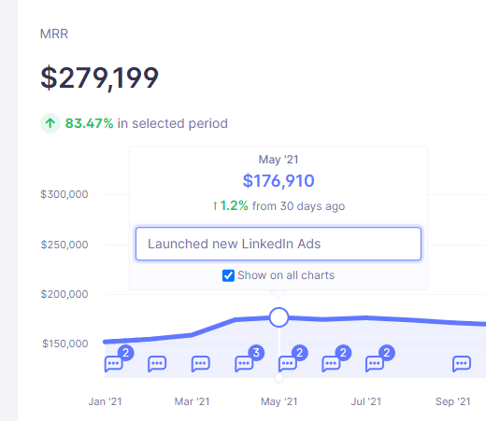Table of Contents

Congratulations, you’ve built a useful Shopify plugin! Now what?
It’s time to start marketing your Shopify plugin to convert customers and earn revenue.
This article will cover helpful tips for marketing SaaS products, including Shopify plugins.
There are over 6,000 apps available in the Shopify App Store, which makes it hugely beneficial to shop owners.
However, that makes it difficult for potential users to find your app by chance. You are going to need to put a lot of thought into your marketing strategies, experiment regularly, and keep pushing. Here are some tried and true ways to market a Shopify app.
1. Build in Public
People love to feel involved, and building in public is a great way to get an invested audience who is cheering for you to succeed.
When building in public, you are inviting people into your inner circle to see how you are building your Shopify plugin and why. The audience gets a front row seat to every step forward you make and every setback you experience.
What is particularly useful about building in public is that you have an excuse to start your marketing efforts months before your minimal viable product (MVP) reaches users.
Building in public is also a great opportunity to get feedback and buy-in from potential customers.
2. Automate your social media marketing when appropriate
There are loads of apps and marketing platforms that can help you automate, schedule, and release your content across multiple platforms.
Every time you release a new graphic on your site, these automation tools can schedule the release of the same content on Instagram.
Similarly, you can create a summary post of every new article on your blog to post it on Facebook and LinkedIn simultaneously. A shortened version can also be sent to your Twitter feed.
If you make videos for YouTube or podcasts, consider sending links out to Twitter for those as well, and maybe put your best clip on TikTok too.
All of this cross-promotion gets you more views. Most people don’t use all the different platforms, so promoting across many social media sites helps you find the biggest audience possible.
With automation tools like Later and Hypefury, you can post on more sites in less time. However, be sure that your copy matches the platform. Sometimes a couple minutes going over the Facebook or LinkedIn version is worth it to match the tone of the different sites.
3. Use customer testimonials to build trust of your product
While most people marketing their Shopify apps know the value of content marketing, few are utilizing the full variety of content available.
One variety that you should be aware of is customer testimonials.
Once your Shopify app has engaged users, consider asking them for reviews. After all, social proof is crucial for building trust with potential customers.
In my experience, the best time to ask someone for a testimonial is shortly after you have given them some specific help.
For example, after your customer service team helps a user with a specific problem or your dev team pushes a requested functionality, send a personalized email to the customer asking them to provide a testimonial to put on your site.
Be sure to review the Shopify terms of service here though, as they have very specific rules about testimonials, reviews, ratings, etc., and you don’t want to have your app pulled over an honest mistake.
4. Track progress along the way
When it comes to marketing, measuring the success of your efforts is key to finding what works best for your company.
One way to do this is by using analytics tools that transform data into graphs and charts, like Baremetrics. From there, you should annotate with helpful information.
Annotations allow you to add little notes to all your metric charts so that you can quickly see how trends change from various specific points in time.
Whenever you introduce marketing experiments, from new ad campaigns and content channels to different pricing schemes, add Annotations to all of your charts in Baremetrics so you can see whether things have changed and how.

To use Annotation, simply click on the point in time where something has happened (top left), add in an evocative comment (top right), and then later on you can easily reference trend changes from that point in time (bottom).
5. Understand the value your app brings, and market to your strengths
Your app brings value to specific people and in specific ways. That’s where your focus should be. Consider some of the following questions:
-
Is your plugin a cheaper alternative to a popular one?
-
Does your plugin do some common task faster or more easily?
-
Does your plugin offer functionality to a new market that’s already offered elsewhere?
-
Does your plugin provide all the functionality of a different one but with a more appealing user interface?
-
Does your plugin make your users money?
-
Does your plugin eliminate pain points?
Once you know why and how your app adds value and for whom, use that info when marketing your Shopify plug.
6. Write good copy, and then have someone edit it
I’ve been a writer for a while and an editor even longer, so believe me when I say that nobody trusts products with spelling and grammar errors all over the front page.
Google will penalize your content as well, which means fewer views on your pages.
While there are outsourcing sites around to find good writers and editors, in my experience, it is better to find someone on LinkedIn. There are loads of groups dedicated to freelance writing and editing, and you’ll save money by hiring directly.
As an additional bonus, you’ll be able to make long-term relationships with your writers so they can find the voice of your demographic and improve the content even more.
7. Optimize your product page with the most important information first
When people are searching for an app, they are unlikely to read everything on your Shopify app page. At first scan, they are likely to only read the first sentence or two.
So, make those first two sentences count by communicating the value you add. You can hide all of the smaller features lower down the page for when the potential user has narrowed down their search and wants more information.
8. Design with aesthetics in mind
Users are more likely to keep using your Shopify plugin if it has a sleek UX/UI because they are going to find it easier to get the value out of it.
Before that, though, they need to find your app. The first point of contact is often your app icon. You should spend some time and money coming up with an app icon that really pops on the page.
Make it different, appealing, and descriptive. This is the first point of contact for the majority of your prospects.
9. Aim for user longevity
When thinking about your sales funnel, you start with visitors, who become leads, and those leads are then converted to customers, possibly via your free trial.
While the funnel is still important, consider also the marketing flywheel.
Your goal should be to maximize your customer lifetime by onboarding clients for the long haul. This means making sure you use the free trial and early months to teach your users how to use your Shopify plugin, how it integrates into their business processes, and why it adds value to their shop.
10. Market to your current users too
Upselling is often an easier way to increase your MRR than finding new users. That’s one main reason that you should never stop marketing to your current userbase.
The other is that it constantly reminds your users about all the value you bring to their enterprise. Happy and engaged customers do not churn.
11. Use the Shopify Community forums
Being a helpful member of the community will gain you trust. When your helpful advice lines up with the functionality of your Shopify plugin, then the community will respond by trying out your product.
Be careful to not just come off as self-promoting though, as inauthenticity in the Shopify Community forums (and Reddit too, if you go that route) can ruin any good faith you have gained.
Summary
Marketing isn’t easy. It can take a long time to figure out exactly who your customers are, where to find them, and what messaging they respond to. But with the right goals, audience, and channels for distribution, you can create a successful marketing funnel for your Shopify plug in.




